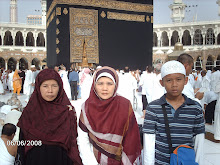
The State of Terengganu was once famed for their turtles. Each night female Leatherback turtles (Dermochelys coriacea) would make the long journey up the beaches of Rantau Abang and along the entire coast of Terengganu. In one season 10,000 leatherback turtle nests would be created by these huge creatures. The Leatherback turtle is the largest of the living marine turtles, being in excess of 3m and weighing just under 1 tonne. She is like no other living turtle with a soft carapace sporting a leathery skin istead of a hard shell which allows her to dive to depths of 1200m. The Leatherback population globally was estimated to be 35,000 females in 2004, unfortaunetly this number is dwindling fast and in Malaysia they are nearly extinct.
10,000 nests a season was the norm in 1950 but since 2000 only a handful of leatherback turtles have nested on the beaches of Peninsular Malaysia. The sharp decline from the largest nesting colony of leatherback turtles to zero is due to many reasons but turtle egg consumption is the focus of this article.
It is a local custom to eat turtle eggs in Malaysia. A custom that could spell the end of all turtles in Malaysia. The Department of Fisheries, Terengganu have banned the collection and trade of leatherback turtle eggs but trade in the other species of turtle is still legal. Turtle eggs are widely sold in local markets which is fuelling poaching of turtle eggs in other States of Malaysia who have banned all turtle egg trade such as Sabah and Sarawak.
Pre 1970's almost 100% of the eggs laid on the beaches of Terengganu would have been collected by the villages who harvest the free bounty. Unfortunately the effects of the turtle egg bounty was not seen immediately due to the ecology and long life of the turtles who can live up to 80 years old. It may be too late for the leatherback turtles in Malaysia as no eggs have produced healthy hatchlings since 2000. In June 2008 two females nested at Rantau Abang and the Department of Fisheries personell could find only 41 infertile eggs – only half of what was expected, it is thought poachers had taken some of the eggs. The Department of Fisheries have considered using advanced reproductive biotechnology to fertilise the eggs using the semen from Green turtles. However the success of this artificial insemination has not been released. The fact of the story is that money makes the world go round and 1 turtle egg fetching USD1 and considering one green turtle nest consists of 100 eggs it is clear to see if there is a demand for turtle eggs there will always be poachers.
10.2.09
LEATHERBACK TURTLES - TERENGGANU
 Tuesday, February 10, 2009
Tuesday, February 10, 2009
 norfadhila
norfadhila
 RSS Feed
RSS Feed Twitter
Twitter










0 comments:
Post a Comment